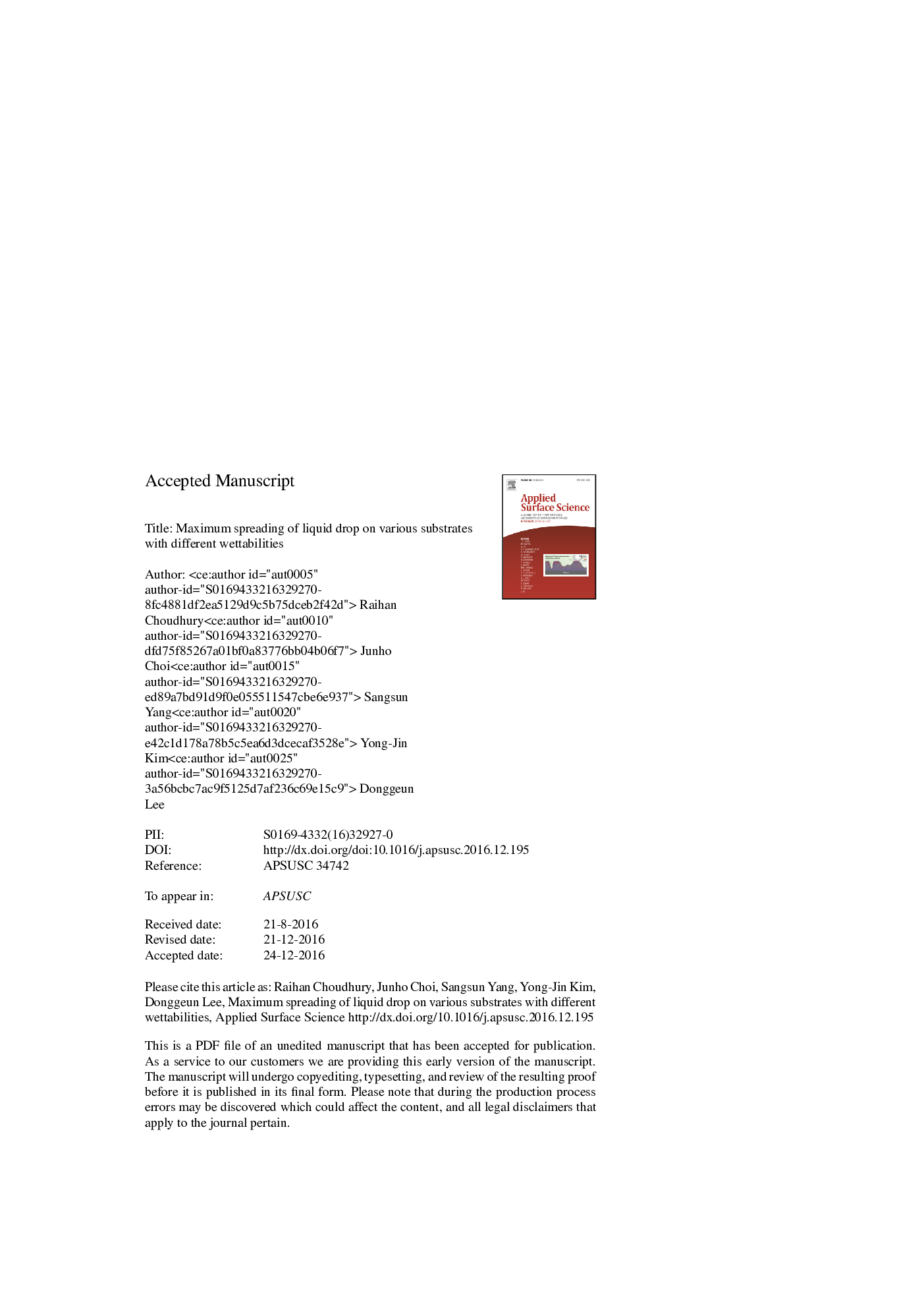| کد مقاله | کد نشریه | سال انتشار | مقاله انگلیسی | نسخه تمام متن |
|---|---|---|---|---|
| 5350541 | 1503554 | 2017 | 16 صفحه PDF | دانلود رایگان |
عنوان انگلیسی مقاله ISI
Maximum spreading of liquid drop on various substrates with different wettabilities
ترجمه فارسی عنوان
حداکثر پراکندگی قطره مایع در بستر های مختلف با قابلیت رطوبت متفاوت
دانلود مقاله + سفارش ترجمه
دانلود مقاله ISI انگلیسی
رایگان برای ایرانیان
کلمات کلیدی
ضربه مایع، لایه، رطوبت خشونت، فاکتور پخش،
ترجمه چکیده
این مقاله یک مدل جدید برای پیش بینی اولیه از حداکثر گسترش یک قطره مایع در یک سطح توصیف می کند. به عنوان اولین گام، یک سری آزمایش ها تحت کنترل دقیق قطر قطره اولیه، ارتفاع سقوط، زبری و مرطوب بودن سطوح خشک انجام شد. پخش مایع گذرا با استفاده از یک دوربین با سرعت بالا برای به دست آوردن حداکثر گسترش آن در شرایط مختلف ثبت شد. هشت مدل پیشین برای پیش بینی دقیق حداکثر گسترش مورد آزمایش قرار گرفتند. با این حال، بیشتر پیش بینی های مدل نسبت به داده های تجربی ما رضایت بخش نبودند. برای تجزیه و تحلیل ویژگی های پیش بینی وابسته به شرایط مدل ها، یک تحلیل مقیاس پذیری مقایسه ای از مدل های ادبی انجام شد. تعصب شرطی در پیش بینی ها به طور عمده به فرمول های نامناسب تخلیه چسبنده یا انرژی بین فاز مایع روی سطح مربوط می شود. از این رو، یک مدل جدید مبتنی بر تعادل انرژی در اثر ضربه مایع برای غلبه بر محدودیت های مدل های قبلی طراحی شده است. در نتیجه، مدل پیشنهادی در پیش بینی پخش مایع در تمام شرایط بسیار موفق بود.
موضوعات مرتبط
مهندسی و علوم پایه
شیمی
شیمی تئوریک و عملی
چکیده انگلیسی
This paper describes a novel model developed for a priori prediction of the maximal spread of a liquid drop on a surface. As a first step, a series of experiments were conducted under precise control of the initial drop diameter, its falling height, roughness, and wettability of dry surfaces. The transient liquid spreading was recorded by a high-speed camera to obtain its maximum spreading under various conditions. Eight preexisting models were tested for accurate prediction of the maximum spread; however, most of the model predictions were not satisfactory except one, in comparison with our experimental data. A comparative scaling analysis of the literature models was conducted to elucidate the condition-dependent prediction characteristics of the models. The conditioned bias in the predictions was mainly attributed to the inappropriate formulations of viscous dissipation or interfacial energy of liquid on the surface. Hence, a novel model based on energy balance during liquid impact was developed to overcome the limitations of the previous models. As a result, the present model was quite successful in predicting the liquid spread in all the conditions.
ناشر
Database: Elsevier - ScienceDirect (ساینس دایرکت)
Journal: Applied Surface Science - Volume 415, 1 September 2017, Pages 149-154
Journal: Applied Surface Science - Volume 415, 1 September 2017, Pages 149-154
نویسندگان
Raihan Choudhury, Junho Choi, Sangsun Yang, Yong-Jin Kim, Donggeun Lee,
